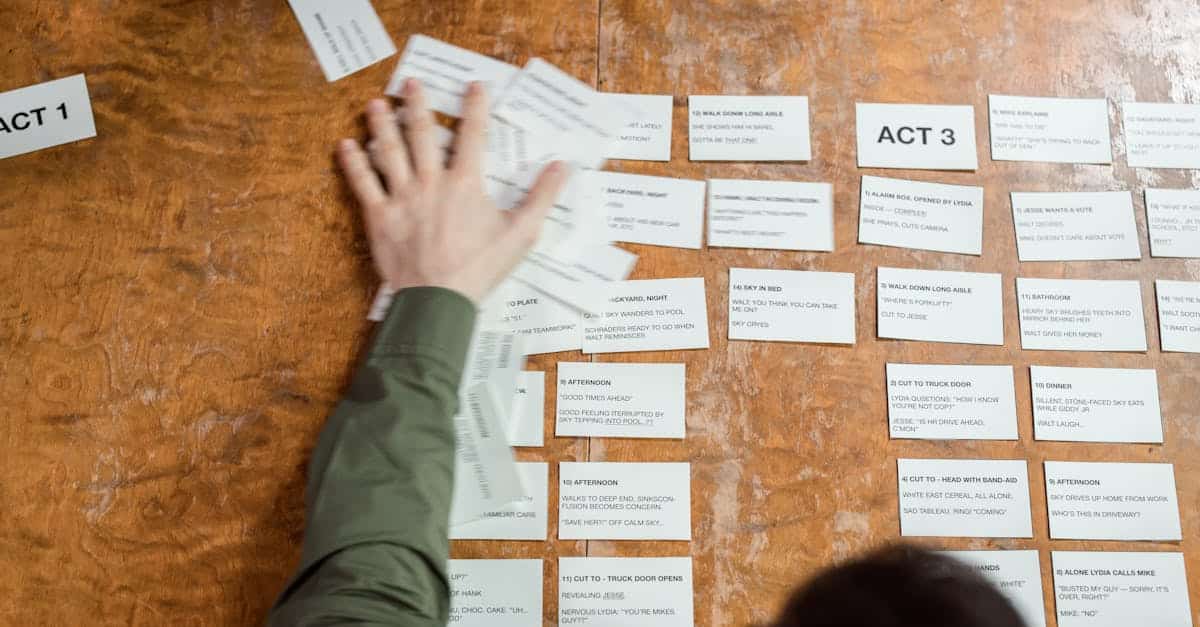Mind mapping emerges as an essential technique for students looking to optimize their study methods. By transforming complex concepts into clear visual representations, this approach promotes understanding and memorization of information. By intuitively linking ideas together, mind mapping not only reduces revision-related stress but also ensures effective retention of knowledge. Every student, regardless of their field of study, can benefit from this method by integrating graphic elements, keywords, and colors to energize their learning.
🔥 Nous recommandons Ideamap
Ideamap est l’outil idéal pour un brainstorming ou un projet collaboratif. Grâce son interface facile et à ses fonctions IA, Ideamap booste votre créativité tout en favorisant une meilleure organisation de vos idées pour atteindre vos objectifs.

Mind Mapping: Effective Study Techniques for Students
Mind mapping, or mental map, is a visual learning technique that facilitates understanding and memorization of information. This method, popularized by Tony Buzan, is based on creating a graphic scheme that structurally represents a particular subject or theme. At the center of the map is the main subject that one wishes to study, surrounded by branches representing the main ideas related to that subject, and other sub-branches for secondary ideas.
For students, mind mapping is a valuable tool that allows them to organize their thoughts, visualize their notes, and make connections between different studied concepts. In this information age, where data flows are ubiquitous, being able to synthesize and structure one’s ideas becomes essential. The mind map helps create a logical hierarchy, thereby making revisions more efficient.
Implementing mind mapping starts with selecting a subject. It is crucial that this subject is well-defined. Once the theme is chosen, the student must place it at the center of a large sheet of paper or a mind mapping software, using colors and symbols to highlight it. Then, each main idea related to the subject is developed in the form of branches. These branches can be enriched with drawings, keywords, or short phrases, allowing for a playful and dynamic approach to revision.
By using this technique, students can also foster their creativity. Mind mapping stimulates associative thinking, which will help generate new ideas and establish unexpected connections. For example, when a student studies a complex subject like economics, they can incorporate graphics, colors, or illustrations that make it more vivid and understandable. It is this visual approach that facilitates long-term retention of information.
Mind mapping can also be applied during exams. Indeed, this format of organizing ideas can help students clarify their thoughts when writing essays or answering open-ended questions. Before starting to write, a student can take a few moments to create a quick mind map, which will help them structure their responses in a logical and coherent manner. Additionally, by using mind mapping during exams, students will be less prone to stress, as they will have an overview of their plan.
Finally, to fully take advantage of this technique, there are many tools and resources available online. For example, various mind mapping software allows users to create interactive mind maps and share them with other students. By consulting platforms like GitMind or courses such as Udemy, students can deepen their knowledge on using mind maps.
In summary, mind mapping is an innovative and effective study technique that enables students to better organize their thoughts, stimulate their creativity, and increase their memorization capacity. Whether for preparing assessments, reviewing courses, or managing projects, mind mapping proves to be a valuable ally in the academic journey.

FAQ – Effective Study Techniques with Mind Mapping
A: Mind mapping, or mental map, is a visual representation method that organizes ideas around a central subject using branches and sub-branches.
Q: How can mind mapping help during revisions?
A: This technique facilitates memorization of information by establishing visual connections and clarifying topics, making revisions more effective and less stressful.
Q: What are the key elements of a mind map?
A: A mind map includes a central subject, keywords, symbols, drawings, and uses different colors to organize ideas in a coherent and intuitive manner.
Q: Can mind mapping be used during exams?
A: Yes, mind mapping is very useful for structuring thoughts when writing an essay or answering questions in an exam.
Q: Are there tools to create mind maps?
A: Several applications and online tools allow for the creation of mind maps, but one can also simply use paper and pens of different colors.
Q: Who can benefit from using mind mapping?
A: All students, regardless of their level or field of study, can benefit from mind mapping to optimize their revision and memorization techniques.













